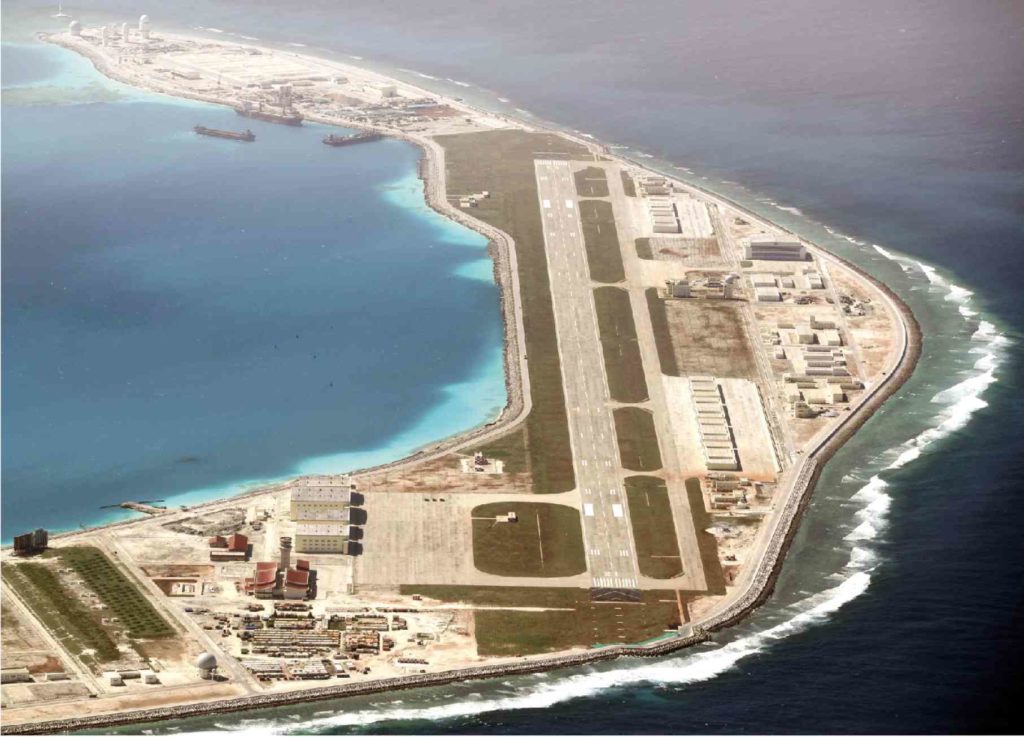
This surveillance photo shows China’s military outpost on Zamora Reef is almost finished. CNBC has reported that China has deployed anti ship missiles and surface-to-air missile systems on Zamora and two other Philippine claimed reefs.
China’s land reclamation in the Spratly Islands in the West Philippine Sea (South China Sea) may have started during the previous administration but it was under President Rodrigo Duterte’s administration that the militarization of the disputed islands happened in full swing, a former solicitor general said on Monday.
“The land reclamation happened during the Aquino administration. We complained about it before the tribunal and declared it illegal. But all the militarization happened during the current administration,” former solicitor general Florin Hilbay said at a forum in Quezon City.
Hilbay was a part of the legal team that won the Philippines’ case against China in the Permanent Court of Arbitration in 2016.
In that landmark ruling, the international court rejected China’s massive claims in the South China Sea. It also said that the Philippines had exclusive economic rights over the waters and reefs within its 200-nautical mile exclusive economic zone.
But the Asian superpower refused to acknowledge the decision, and continued asserting its claims in the entire South China Sea. The Philippine government likewise had never brought up the ruling in an apparent favor of economic investments and opportunities from China.
Instead, Mr. Duterte had repeatedly blamed the Aquino administration and the United States for not doing anything to stop the reclamation in the disputed sea in recent years.
China completed its dredging work to build its seven new islands in the Spratlys in early 2016. But the next phase of its buildup in creating air and naval bases mostly happened after Duterte assumed office in June 2016.
Data previously released by Asia Maritime Transparency Initiative showed that China’s construction of facilities in the Spratlys and Paracels in 2017 covered 72 acres or 290,000 square meters.
Kagitingan Reef (Fiery Cross Reef) had the most construction with 27 acres or 110,000 square meters. It was also in the same year that hangars, airstrips, missile shelters, underground structures, radar communications were either built or completed.
China has also made bolder activities in 2018 with the deployment of bombers, military transport planes, anti-ship and anti-missile platforms, and communications jamming equipment.

Surveillance photo given to the Inquirer by a source shows one of the reefs transformed by China into a virtual fortress in the West Philippine Sea
PH vs China case
The government has earned criticisms for its non-confrontational stance on the West Philippine Sea issue.
Foreign Affairs Secretary Alan Peter Cayetano has repeatedly explained that they do not want to engage in a “shouting match” with China.
While strategies may have changed under the Duterte administration, Cayetano insisted that the Philippines has not given up on its claims in the West Philippine Sea.
Hilbay, however, said the favorable arbitration ruling should have been the “core basis” of the West Philippine Sea strategy.
“It’s very important to understand what the decision means. Ito ang pinaka-importanteng baraha. Ito ang alas natin. They may have a powerful navy but this is our most important tool against China,” he said.
He said he believes that it’s a binding decision as China is a member of the United Nations Convention on the Law of the Sea (UNCLOS).
“That fact alone says that China recognizes the UNCLOS system, and part of it is the compulsory dispute settlement mechanism which decided the Philippines vs. China case,” he said. /kga
RELATED STORIES
EXCLUSIVE: New photos show China is nearly done with its militarization of South China Sea
China deploys missiles on 3 PH-claimed reefs
China military planes land on PH reef
China warships, planes sighted at PH-claimed reefs since 2017

